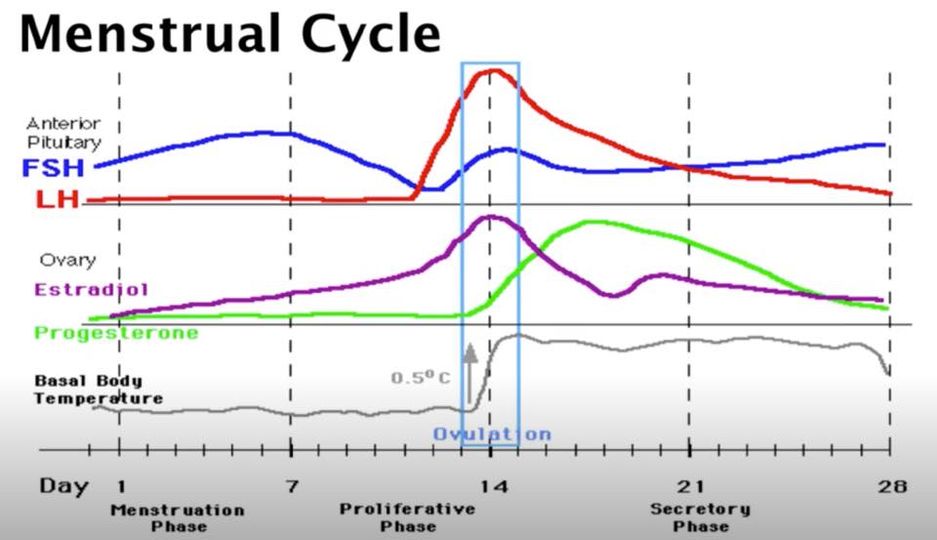
Working with Female Athletes: A Holistic Guide to Performance and Injury Prevention
Female athletes bring unique challenges and opportunities to the world of sports science and training. By understanding their distinct anatomical, hormonal, and physiological characteristics, we can better support their performance while minimising risks of injury. In this article, we dive into orthopaedic considerations, the effects of the menstrual cycle, and postnatal recovery.
Orthopaedic Considerations: Understanding Female Anatomy
The structure of the female body offers both strengths and challenges when it comes to athletic performance. By tailoring training and rehabilitation to these characteristics, we can unlock greater potential.
Joint and Trunk Differences
Female athletes often exhibit a wider pelvis, resulting in an increased Q-angle—the angle between the femur and tibia. While this adaptation allows for childbirth, it also changes biomechanics, especially in high-impact sports.
- Impact on Performance: A larger Q-angle can alter knee alignment, potentially increasing the risk of ACL injuries and patellofemoral pain.
- Solution: Focused strength training for the glutes, hamstrings, and quadriceps can reduce strain on the knees, promoting greater stability and power.
Ribcage and Respiratory Efficiency
Did you know that women’s ribcages are typically smaller and differently shaped compared to men’s? This influences respiratory efficiency and upper body strength. Female athletes benefit from targeted core and breathing exercises to improve performance in endurance and power-based activities.
Posture and Performance
Hormonal changes, anatomical differences, and sports-specific training can all contribute to postural imbalances in female athletes. For instance:
- Common issues include hyperlordosis (excessive inward spinal curvature) and forward head posture, which may increase injury risk.
- Solution: Strengthening the posterior chain (back, glutes, and hamstrings) and incorporating mobility exercises for the thoracic spine can ensure better alignment and biomechanics.
Postnatal Orthopaedics: Supporting Recovery for Athletic Mothers
Postnatal recovery is a critical phase for female athletes looking to return to sport after pregnancy. The body undergoes significant changes that must be addressed to rebuild strength and confidence.
-
Pelvic Floor Health
Pregnancy often weakens pelvic floor muscles, leading to issues like incontinence or reduced core stability. Rebuilding strength through tailored exercises like Kegels and diaphragmatic breathing is key.
-
Core Restoration
Conditions such as diastasis recti—a separation of abdominal muscles—can hinder athletic performance. Start with gentle core stabilization exercises and progress gradually under professional supervision.
-
Joint Laxity
Hormones like relaxin remain elevated post-pregnancy, leading to joint instability. Incorporating functional strength training and proprioceptive exercises can help restore balance and reduce injury risks.
Hormonal Fluctuations and the Menstrual Cycle: Training Smarter
The menstrual cycle isn’t just a physiological process—it’s a roadmap for optimizing training and performance. By aligning training modalities with hormonal changes, athletes can capitalize on strengths and manage vulnerabilities.
Phase 1: Follicular Phase (Days 1–14)
- What’s Happening: Estrogen levels are rising, enhancing muscle recovery, coordination, and energy availability.
- Best Training Focus: High-intensity strength training and endurance sessions work best in this phase. It’s also a great time for setting personal records.
Phase 2: Ovulatory Phase (Around Day 14)
- What’s Happening: Estrogen peaks, leading to increased strength and power. However, joint laxity also increases, elevating the risk of ligament injuries.
- Best Training Focus: Power-focused activities, with an emphasis on proper form to minimize injury risks.
Phase 3: Luteal Phase (Days 15–28)
- What’s Happening: Progesterone levels rise, and fatigue may set in. Performance may dip slightly, and endurance feels harder.
- Best Training Focus: Moderate-intensity training with a focus on recovery, stretching, and maintaining consistency without overloading the body.
Pro Tip: Tracking the menstrual cycle can help athletes identify patterns in performance, making it easier to adapt training programs for peak results.
Making the Science Accessible: Practical Tips for Athletes and Coaches
Here’s how to bring all this information together into actionable steps:
- Strengthen Stability: Incorporate exercises like glute bridges, single-leg squats, and planks to counteract biomechanical challenges such as a high Q-angle.
- Train with the Cycle: Use apps or wearables to track menstrual phases and adjust training intensity accordingly.
- Postnatal Patience: For postnatal athletes, prioritize slow, steady progress over rushing back to pre-pregnancy performance levels. Recovery is part of the journey!
- Focus on Posture: Balance strength training with mobility and alignment-focused exercises like yoga or Pilates to prevent overuse injuries.
Humans are complex, health and illness don't just happen in isolation. Health and illness is influenced by biology, psychology, and culture. This is especially true for females, the pressure to conform to sometimes cotradictory roles within the home and workplace can have a negative impact on psychological wellbeing and cultural ideals about what feminimity should look like can lead to behaviours that impact health.
Why This Matters
Understanding these factors is about more than optimizing performance—it’s about empowering female athletes to thrive. With the right knowledge and tools, coaches and healthcare providers can design programs that respect the unique needs of female physiology. This holistic approach not only improves results but also fosters long-term health and well-being.
By recognizing the interplay of anatomy, hormones, and training, we can help female athletes break barriers and reach new heights in their sporting journeys. Whether you’re an athlete, a coach, or a practitioner, embracing this knowledge creates a path toward sustainable success.
Having gone through extensive training with the CHEK institute, as all CHEK practitioners do, we have the tools and knowledge to work with female clients in a more enlightened way than just thinking of females as small men.